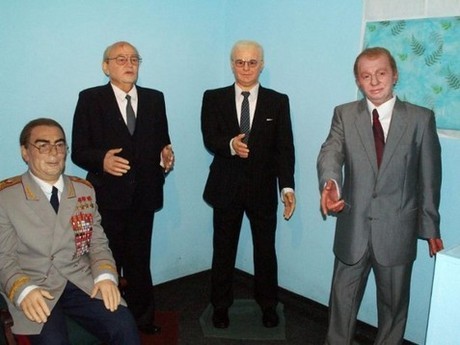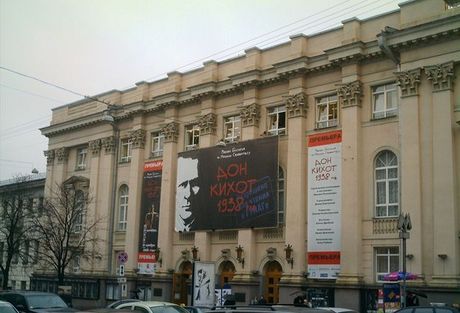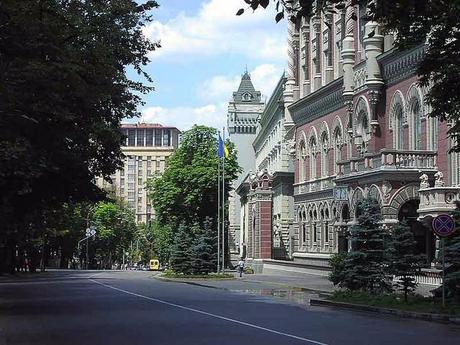Kiev

From the ancient times the wax was used for various purposes - for mummy preservation or as a protectant for oil paintings and frescoes. Romans made wax moulds of dead people's faces. The portraits of friends and relatives were also made of wax. In the Middle Ages the wax sculptures were often located in Roman and Gothic churches and chapels.

The Museum of Art named after Bogdan and Varvara Khanenko was founded in 1919 on the basis of their private museum. The museum is also called the Museum of Western and Oriental Art. Now it keeps one of the best collections of foreign art in Ukraine. From 1919 the number of exhibits has been more than 13 times increased - from 1,250 to nearly 17,000 artworks, with 2,000 pieces exposed in museum halls. Visitors can view many remarkable samples of foreign art: Ancient Greek, Roman, Italian, French, Spanish, Flemish, Dutch, Japanese, Chinese, Persian, Turkish, Egyptian, etc.

In 1863 the Branch of the Emperor Russian Musical Society was established in Kiev. This year is an important milestone in the history of musical life of Ukraine and Kiev. It had been rapidly developing since the first part of the 19th century.

In Kiev, there are several botanical gardens: the one named after academic Fomin, the State Botanical Garden, and the Botanical Garden of the Ukrainian Academy of Science. The last one is probably the most picturesque garden in Kiev: the garden not only contains various kinds of plants, but also neighbors with the beautiful Vidubitsky monastery.

Kiev Zoo was founded in 1908 by the Nature Lovers Society and financed by private donations. At the beginning the zoo experienced difficult times and could not boast a great amount of animals: there were just 17 kinds. The first winter the animals had to spend in the food department of the main Kiev railway, as the zoo founders did not find a shelter for the animals they possessed.

Trukhanov Island is an island located on the Dnieper River opposite the historic Podil neighbourhood of the city of Kiev. It has an area of 4.5 km2 (1.7 sq mi). The island is mostly covered by greenery, like the Hidropark island nearby. Until 1957, the only method of transportation to the island was by boat in the summer or by crossing the ice in the winter. In 1957, the Park Pedestrian Bridge was built, easing the travel to and from the island.

Park Slavi, or the Park of Glory, is located on the intersection of Sichnevogo Povstaniya Street, Suvorova Street and Dmitrievsky Slope. The park is dedicated to the memory of those heroes who died defending Kiev and Ukrainian lands.

The National Academic Theatre of Opera and Ballet named after T.G. Shevchenko is the oldest musical theatre in Ukraine. It was founded in 1867. Its first season was opened with the opera Askold's Grave by A. Verstovsky. While at that time Ukraine was a part of Russian Empire, mainly the operas of Russian composers were staged, such as Mermaid by A. Dargomyzhsky, Life for Tsar and Ruslan and Lyudmila by М. Glinka, Queen of Spades and Mazepa by P. Tchaikovsky.

In spite of its rather academic name the Academic Theatre of Drama and Comedy, located on the left bank of the Dnepr River, is a very innovative and young establishment. The theatre was founded in 1979 on the initiative of Eduard Mitnizky, who headed the company and become the artistic director of the troupe. The first play of the new theatre that opened a galaxy of bright performances was Acme by Ukrainian playwright Rodion Fedenev.

To the south-east of Kreschatik Street there is a height that in the old days used to be called Klov after the Klov creek that rounded it. Nowadays the former Klov height consists of two districts, which are Pechersk and Lipki. The main thoroughfare of the region, Gryshevskogo Street, begins at the Kievo-Pecherskaya Lavra, which gave the name to Pechersk, and leads to the Evropeyskaya, or European, Square.
 1 23 4
1 23 4 
